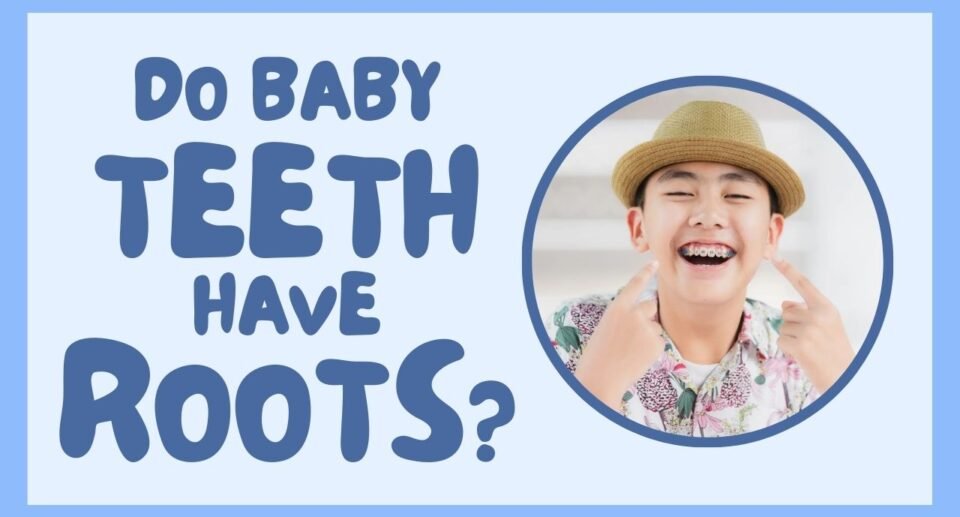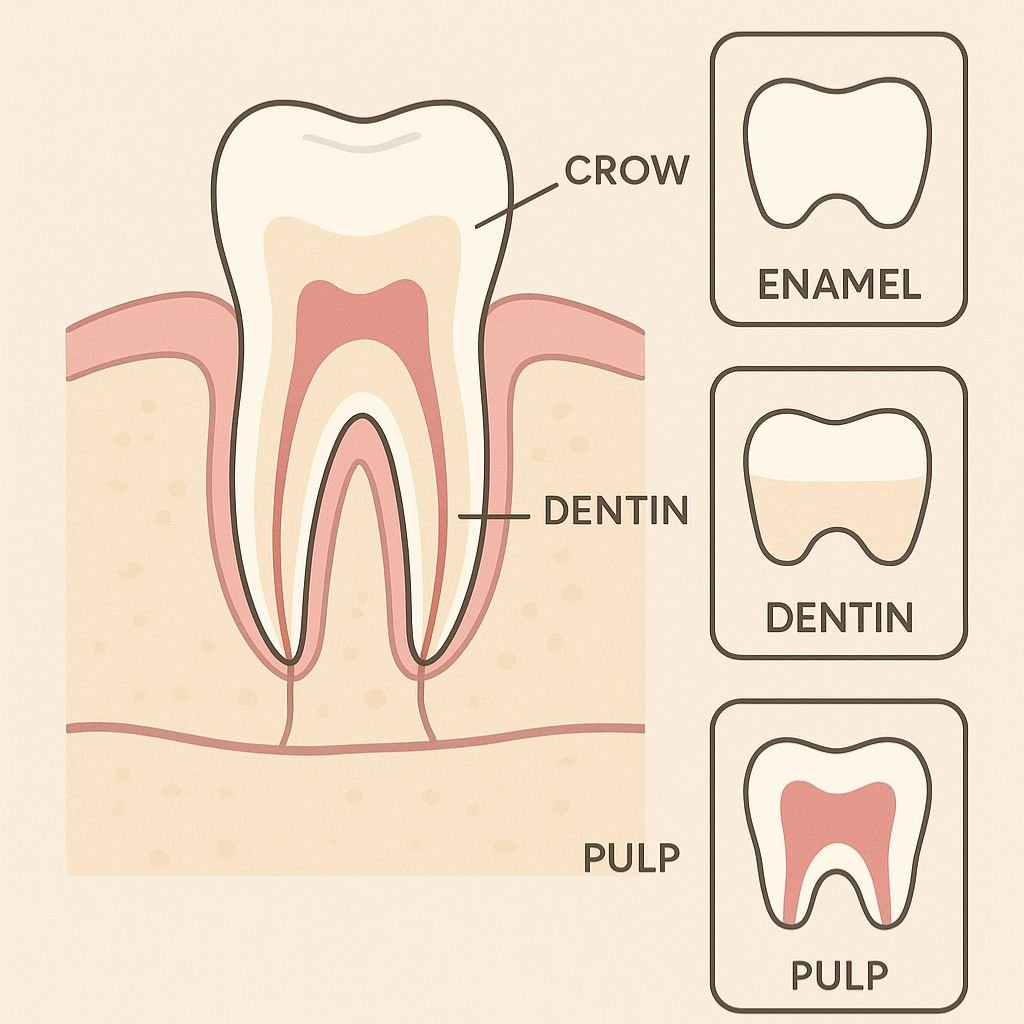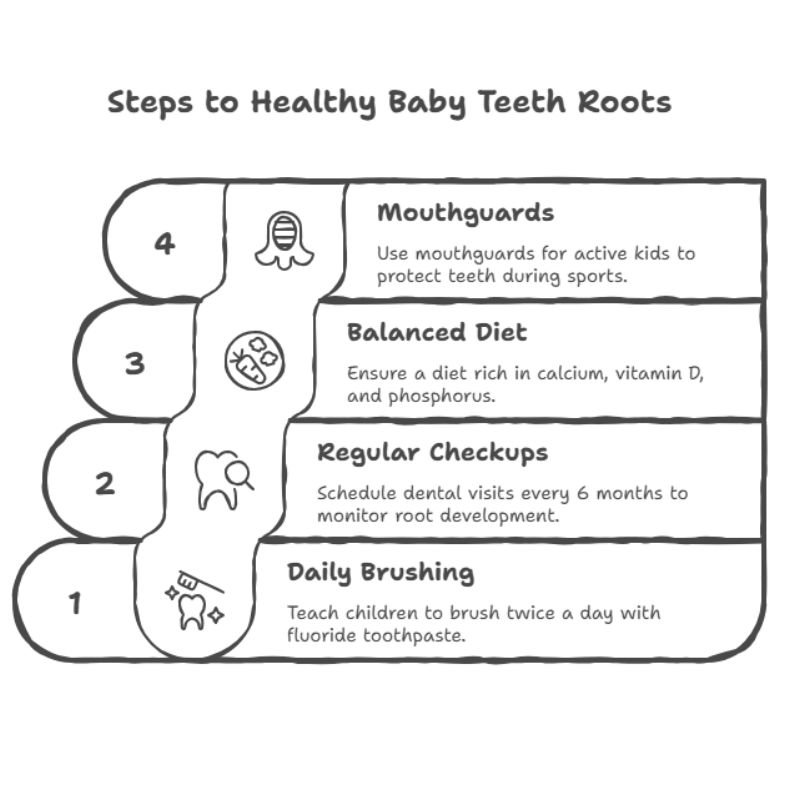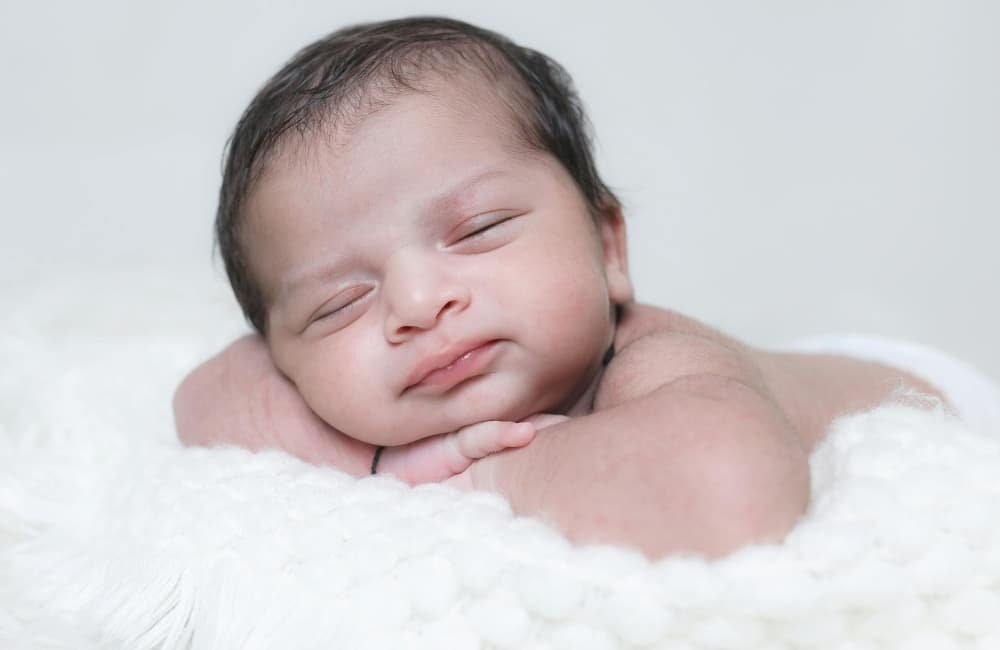Do Baby Teeth Have Roots?

Baby teeth do have roots, just like grown up teeth. Many people think baby teeth don’t have roots because when they fall out, we can’t see the roots. But doctors and dentists say that baby teeth need roots to stay strong in a child’s mouth.
Baby teeth have two parts the white part we can see (called the crown) and the root part that goes down into the gums. The roots hold the teeth in place so kids can eat, talk, and smile properly. Without roots, baby teeth would just fall out right away.
The special thing about baby teeth roots is that they slowly disappear as the new grown-up teeth start to grow. This is why baby teeth get loose and fall out naturally when kids are around 6 to 12 years old. The roots melt away, making room for the bigger permanent teeth.
Even though baby teeth are temporary they are very important. They help children chew their food, learn to speak clearly, and keep space for the permanent teeth that will come later. This is why dentists say it’s important to take good care of baby teeth, even though they will eventually fall out.
What Does a Baby Tooth Root Look like
Baby tooth roots look like thin fingers or claws that go down into the gums. They are smaller and thinner than grown-up tooth roots. But we almost never see these roots because they melt away before the tooth falls out. When a baby tooth comes out, the bottom looks rough and bumpy. This bumpy part is where the root used to be stuck to the tooth. The root dissolves away so the new big tooth can come in. That’s why baby teeth look jagged at the bottom when they fall out the smooth root part is already gone. Baby tooth roots are made to disappear on their own. This is different from grownup teeth, which keep their roots forever.
Do Baby Teeth Have Nerves
Baby teeth are much more than just tiny white crowns sitting in a child’s mouth – they’re actually living, breathing parts of the body with their own network of nerves and blood vessels! Just like adult teeth, every baby tooth has a soft, pink center called the pulp that’s packed with nerve endings and tiny blood vessels. These nerves are what make baby teeth “alive” and able to feel things like ice cream being too cold or soup being too hot. The nerves also act like little alarm systems when a cavity starts forming or a tooth gets bumped too hard, the nerves send pain signals to let the child know something’s wrong. This is why children can get toothaches from baby teeth just like adults do with their permanent teeth.
The blood vessels in baby teeth work like tiny delivery trucks, bringing nutrients and oxygen to keep the tooth healthy and strong. When bacteria from cavities damage these nerves and blood vessels, it can cause serious pain and infection. This is exactly why dentists stress that baby teeth need just as much care as permanent teeth because even though they’re temporary, they’re very much alive with their own nervous system that can hurt when damaged. Understanding that baby teeth have nerves helps explain why good dental care for children is so important, even for teeth that will eventually fall out.
Do Baby Molars have Roots?
Yes, baby molars have roots, but they’re different from front baby teeth. Baby molars have multiple thin roots that spread out wide, while front teeth only have one root each. These multiple roots are spaced far apart on purpose to make room for the permanent teeth growing underneath them. Just like all baby tooth roots, molar roots slowly dissolve away as the permanent teeth push up, making the baby molars loose and ready to fall out around ages 9-12. When baby molars fall out, they have a rough, bumpy bottom where the multiple roots used to be attached.
Why do Baby Teeth not Have Roots When they Fall Out
Baby teeth don’t have roots when they fall out because the roots actually dissolve away before the tooth comes out! This happens when permanent teeth start growing underneath baby teeth. The new teeth push upward and release special cells that slowly “eat away” at the baby tooth roots over many months. This process is called root resorption, which means the roots gradually melt and disappear. As the roots get smaller, the baby tooth becomes loose and wobbly.
Here’s what happens:
- The permanent tooth grows under the baby tooth
- Special cells break down the baby tooth’s roots
- The baby tooth gets loose as its roots disappear
- The tooth falls out with a rough bottom where roots used to be
When you look at a fallen baby tooth, the jagged bottom shows where the dissolved roots were attached. The roots aren’t missing they’ve been absorbed by the body to make room for the bigger permanent tooth. Sometimes if this process doesn’t work right, you might see “shark teeth” where both the baby tooth and new tooth are visible at the same time. This natural system makes sure there’s enough space for the larger adult teeth.
Dont Miss : How to Treat Baby Eczema Early
What are Role of Roots in Baby Teeth
Anchoring and Stability
Baby tooth roots stabilize the teeth in the jaw, ensuring that children can chew food without pain or looseness. Without strong roots, primary teeth would not function properly.
Guiding Adult Teeth
Roots of baby teeth act as placeholders. They keep space open for permanent teeth and guide them into the correct position. This prevents misalignment and overcrowding later in life.
Nerve and Blood Supply
Inside each root is a canal that contains nerves and blood vessels. These provide nutrients to the tooth and maintain its health until it is ready to fall out.
What Happens to Baby Tooth Roots When Teeth Fall Out?
When it is time for a permanent tooth to come in, the body triggers a fascinating process:
- Permanent Tooth Development – Adult teeth begin forming underneath the gums.
- Resorption Begins – The roots of the baby teeth start to dissolve as special cells (odontoclasts) break down the root structure.
- Tooth Loosens – With less root support, the baby tooth becomes wiggly.
- Tooth Falls Out – Eventually, the tooth falls out completely, leaving room for the permanent tooth to erupt.
By the time a baby tooth falls out, most or all of its root structure has dissolved. This is why many baby teeth appear “rootless” when they come out.
When Do Baby Teeth Lose Their Roots?
The timeline for baby teeth resorption varies, but generally follows this pattern:
- Ages 6–7: Front lower and upper teeth (incisors) begin to loosen.
- Ages 7–9: Lateral incisors fall out.
- Ages 9–12: Canines and molars start resorption.
- Ages 10–12: Second molars fall out, completing the process.
By age 12 to 13, most children have lost all their baby teeth and replaced them with permanent ones.
Why Protecting Baby Tooth Roots Is Important
Even though baby teeth eventually fall out, their roots serve essential functions during early childhood. Protecting them helps ensure. Protecting baby teeth roots helps ensure healthy chewing, speech, and alignment. It also allows children to confidently enjoy milestones whether it’s the first day of school, a birthday party or Baby’s First Beach Day.
- Healthy chewing and nutrition
- Proper speech development
- Correct alignment of permanent teeth
- Reduced risk of costly orthodontic treatments later
Parents should treat baby tooth care as seriously as adult tooth care.
How to Keep Baby Teeth Roots Healthy
Daily Brushing and Flossing
Teach children to brush twice a day with fluoride toothpaste and floss daily to prevent decay that could damage the roots.
Regular Dental Checkups
A dentist can monitor root development, check for early resorption issues, and detect infections. Children should see a dentist by age 1 and continue with regular visits every 6 months.
Balanced Diet
A diet rich in calcium, vitamin D, and phosphorus supports strong teeth and roots. Limit sugary snacks and drinks that can erode enamel and harm roots.
Mouthguards for Active Kids
Protecting teeth from injury during sports can help preserve baby tooth roots and prevent premature tooth loss.
Baby Teeth Roots vs. Permanent Teeth Roots
| Feature | Baby Teeth Roots | Permanent Teeth Roots |
| Lifespan | Temporary, dissolve naturally | Permanent, lifelong |
| Purpose | Guide permanent teeth, chewing in childhood | Chewing, biting, lifelong support |
| Number | 20 primary teeth with roots | 32 permanent teeth with roots |
| Vulnerability | More prone to resorption and premature loss | Stronger and more resilient |
When to See a Dentist About Baby Tooth Roots
Parents should consult a dentist if they notice:
- A baby tooth that remains in place long after others have fallen out
- Signs of infection such as swelling, pus, or persistent pain
- Premature loss of baby teeth due to injury or decay
- Permanent teeth erupting in the wrong position
Early intervention can prevent complications and ensure a smooth transition from baby to adult teeth.

Aashley Kai is the Editorial Director of Chelsea Famous Parenting and a licensed expert in early childhood education. She holds a Master’s in Child Psychology from the University of Texas Southwestern Medical Center and has worked as a preschool teacher and child therapist. Since joining in 2024, Aashley has been dedicated to creating well-researched, trustworthy parenting resources. Her work helps parents and caregivers foster nurturing, educational environments for children. Outside of work, she enjoys hiking and photography, capturing nature from a child’s perspective.





